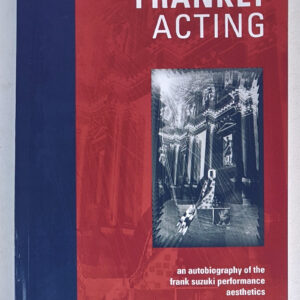Prices in AUD. Shipping worldwide. Flat rate $8 postage per order within Australia. International by weight calculated at checkout. Read full terms.
-

A Devil Pokes The Actor: Frankly Acting 2
AU$30.00 Read MoreAdd to cartJohn Nobbs; Peter Berkahn
Brisbane: Frank Theatre Press, 2010.“This is the second book about actor training by John Nobbs. The first, Frankly Acting, outlined the early development of the Frank Suzuki Performance Aesthetics (FSPA), as a western variant and translation of the classic Suzuki Actor Training Method (SATM). This devil’s logbook is a series of 25 provocations that poke further and deeper into the alchemical triggers and mechanisms that inform the one true actor training system originally devised by Tadashi Suzuki. Interspersed throughout the 25 provocations are revelations by some of the many actors that have used the FSPA to develop their acting spirit. Tadashi Suzuki, the inventor of the SATM, has stated that he believes that the training is not just for the actor’s craft, but that it should be a creative tool for making theatre performances . The FSPA follows on the traces of that purpose, and this book outlines its importance as the creative onestop shop of Ozfrank Theatre Matrix. It includes examples, with colour photographs, that illustrate how Ozfrank director Jacqui Carroll uses the FSPA to impel her productions.” (publisher’s blurb)
-

Frankly Acting: An Autobiography of the Frank Suzuki Performance Aesthetics
AU$20.00 Read MoreAdd to cartJohn Nobbs
Brisbane: Frank Theatre Press, 2006.“John Nobbs’ Frankly Acting is the first Australian book espousing a uniquely homegrown theatrical performance theory. As Grotowski did in Poland and Artaud in France, Nobbs has articulated an Australian performance aesthetic which revivifies in a contemporary context the theatrical traditions of its geographic region. With illuminating references to popular culture, his Suzuki-inspired method is based on rigorous theatrical discipline, but with an ever-present and distinctively Australian sense of humour. Frankly Acting grounds its theory in the artistic heritage of the Asia-Pacific, with a theatrical resonance which is universal.” (Martin Buzacott)
